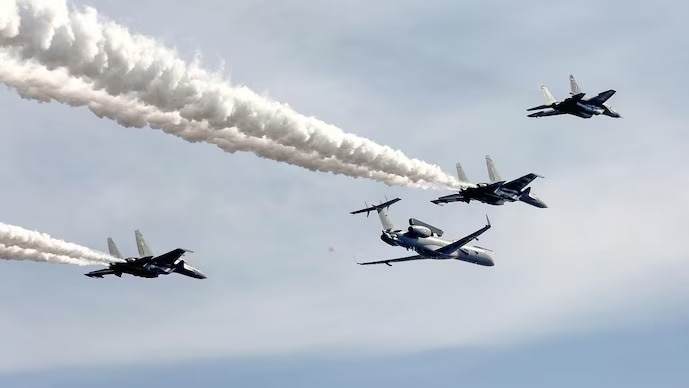With both Russia and the US fighting for deals, competition is intensifying to supply India with fifth-generation fighter jets. With Aero India 2025 scheduled to launch in Bengaluru on February 10th, Russia has made a strong entry by introducing the SU-57 stealth fighter for the first time in Indian airspace.
Meanwhile, the US is pushing for the F-35 to be considered as India is trying to strengthen its aviation combat capabilities.
Russia has officially pitched an export variant of SU-57, known as SU-57E, to India. Rosoboronexport, the company behind FighterJet, offers both direct purchase and co-production options.
The arrival of SU-57 in India marks a new initiative by Moscow to expand its defence ties, and a collaboration with Russia once investing in the Fifth Generation Fighter (FGFA) project. It is based on history.
India initially partnered with Russia in the early 2000s to jointly develop a stealth fighter, and in 2010 signed a design agreement. However, in 2018, India withdrew from the project and focused on its own Indigenous Advanced Medium Fighter (AMCA).
Meanwhile, the US is promoting the F-35 as the best option for India’s next-generation air advantage. Advanced stealth technology, combat testing performance and integration with Western defense systems make the F-35 a game-changer for the Air Force.
The aircraft is already on display in India, and Washington is working to deepen its strategic defence partnership with New Delhi.
India is focused on developing AMCA, but advances have slowed down due to technology and manufacturing challenges. The government has approved the construction of six prototypes, but initially expected over the next five years.
However, concerns about engine development and delays for the Tejas Mark II program raise questions about whether AMCA will operate before 2035. Given these uncertainties, India may need to acquire advanced fighter jets from foreign partners as a temporary solution.
Russia and the US were both India’s leading defense suppliers, but their approach is different. Russia has long been India’s largest arms supplier, accounting for 60-70% of military hardware.
It consistently shares defence technology with India, leading to the joint production of platforms such as the Brahmos missile, AK-203 rifle and SU-30MKI fighter jets. The SU-57E is offered as another major collaboration with the potential for technology transfer.
Meanwhile, the US has signed important agreements in recent years to significantly increase defence cooperation with India, expand joint military exercises, and increase defense interoperability. The F-35 represents strategic change, aligning India with the Western defence ecosystem, which is able to enhance operational capabilities along with its allies.


